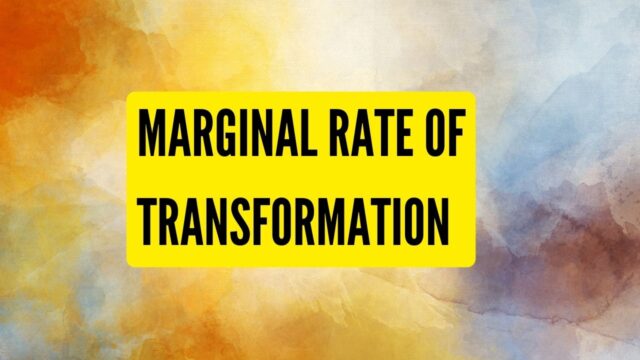
The formula for the marginal rate of transformation (MRT) comes from the basic geometry of a triangle. The marginal rate of transformation (MRT) is the slope of side a divided by side b, which slopes downwards from left to right. The slope of side a is a negative number, which means that good y decreases at a certain rate while good x increases. This formula can be applied to any change in the quantity of an asset.
Product possibility frontier
The production possibility frontier shows the maximum quantity of goods or services that can be produced. The production possibilities frontier is concave toward the origin, and this concavity is common. In other words, the production of one item will decrease if the resources used to produce it increase in value for another. However, a business that is operating on an inefficient product possibility frontier will not decrease the production of one item and instead will reallocate resources to produce both. In this way, the amount of per-unit value can be increased.
The production possibilities frontier demonstrates how resources are allocated among competing goals. Healthcare, for example, has large gains if the resources allocated to this sector are spent vertically. However, healthcare, on the other hand, has an outward curve that is influenced by the law of diminishing returns. As a result, this is one of the most egregious examples of the product possibility frontier. In fact, it is an example of how education, healthcare, and economic growth compete with one another.
Similarly, the production possibility frontier also illustrates the production efficiency between two commodities. For two-commodity systems, the production of one can be increased without increasing production of the other. Thus, a production possibility curve measures the efficiency of production by showing that a company can increase the output of one commodity by sacrificing another. However, this is not the case for companies that produce three or more commodities, as it is not possible to maximize the production of one product by sacrificing the other.
If we are comparing the marginal rates of production and consumption, we can see that there is a trade-off between healthcare and education. The society at point B is able to acquire more education at the cost of healthcare. If it is at point C, it can only improve its education by sacrificing healthcare. This tradeoff is known as the opportunity cost. It also demonstrates the trade-off between the marginal rate of transformation and healthcare.
The production possibility frontier is the set of choices that society can make. The curve of the PPF tends to bend outward. Choices that lie outside of this range are wasteful and not attainable. This means that growing economies tend to shift their PPF outward. But, this trend is not universal. It is possible that a nation’s PPF curve is more inward or outward than the PPF, which is the case in our current world.
The slope of the product possibility frontier is defined as the rate at which production can be transferred from one good to another. It is also known as the marginal opportunity cost of a commodity. It is determined by examining various combinations of goods and their marginal rate of transformation. The slope of the red line touching the PPC equals the marginal rate of transformation. If the production bundle is inside the PPC, then production of the other good will be increased. This is the most common method of transfer.
The marginal rate of transformation (MRT) is related to the production possibility frontier. The slope of the curve shows the different bundles of production produced by an enterprise. Moreover, the MRT will change along the curve if the input quantity is equal to that of another. This relationship between supply and demand can be understood with the help of two PPFs: the production possibility frontier and the marginal rate of transformation. Once you understand how the two PPFs relate to each other, you can create a product possibility frontier.
The marginal rate of transformation measures the tradeoff between two goods and shows the efficiency of resources. The marginal rate of transformation quantifies the opportunity cost of one good over the other. The marginal rate of transformation varies as the person moves along the PPF. The more one good is produced, the more of the other good they have to pay. This concept is often referred to as the law of diminishing returns. If you produce more of one good than the other, your opportunity cost rises.


































